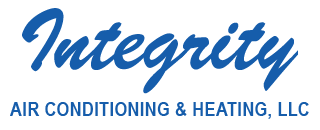We all like saving money on our monthly utility bills, but you should know there’s a way to keep costs down, even when you’re out of the house.
The secret is your thermostat. By learning more about its special features and settings, you can structure its daily schedule around your personal preferences. You can create a number of automated temperature settings for when you’re home, away or even when you’re sleeping.
With a few simple adjustments, you’ll be able to enjoy comfortable temperatures while cutting down your energy bills. Here are some ways your thermostat doesn’t have to use up all your summer spending money:
While at Home
Pretty much whenever you’re home, you want a nice range of pleasant temperatures. It’s only natural to want your thermostat lower in the summer if you’re indoors to make the most of the cool air.
But the ideal temperature for the summer is usually between 78 and 80 degrees Fahrenheit. By adjusting things a few degrees, you can stay cool while still keeping your energy bills low.
While Gone
If you’re setting the temperature for when you are out of the house in summer, it’s advantageous to set the thermostat higher for while they’re gone.
If your home is located somewhere a little cooler, you can set the thermostat to higher temperatures like 88 degrees while no one is home before lowering it back to the sweet spot of 78-80 degrees after you return. This way, your air conditioning system isn’t working around the clock to provide cooling for a bunch of empty rooms.
While Asleep
When it comes to sleeping in the summer, you want a nice cool temperature. A great place to start is between 68-72 degrees Fahrenheit. You won’t have to worry about getting too hot or too cold at some point overnight.
Other Strategies for Lowering Energy Use:
- Smart thermostat installation: Switching to a smart thermostat in the summer helps save money on energy costs as it forms temperature schedules according to your lifestyle and personal preferences. It’ll take care of making changes while you are home or sleeping, before allowing it to warm up when no one is around. Using reputed brands and models such as the Lennox iComfort, you have the ability to remotely access and change the temperature through your smartphone, tablet or laptop. Scheduling smart thermostat installation in your Phoenix home can be the simplest strategy for maintaining comfortable, yet energy-efficient temperatures no matter where you are.
- Upgrade your HVAC system: A new HVAC system is another great option for long-term energy savings. If a system boasts high energy efficiency, lower utility bills won’t be far behind since it requires less energy to heat and cool your home. Air conditioning installation in Phoenix is only a phone call away, so don’t hesitate to reach out to local pros like Integrity AC & Heating LLC who can set you up for success.
- Stay on top of routine AC maintenance: Hiring a skilled professional to perform regular air conditioning maintenance in Phoenix can have a significant impact on your utility bills. If you stay on top of cleaning key components like the coils, checking for damage and keeping vents clear of dust and debris, this can help your HVAC system perform better during day-to-day use.. Increasing efficiency also limits strain on important or delicate components and lowers operational costs, lowering total energy use and eventually the total monthly bill.
- Clean or replace the air filter on a regular basis: A regular schedule for cleaning or replacing the HVAC system’s air filter saves money by improving airflow. When filters become clogged, air conditioners have to work harder, and the added strain may impact the system’s life span and cause breakdowns.
- Check if you have enough insulation in the attic: Insulation is one of the key components in any energy-efficient home, keeping the hot air outside and the cool air inside during the summer. The North American Insulation Manufacturers Association (NAIMA) suggests that homeowners living in southern climates should possess at least 13-14 inches of insulation, while states further north need 16-18 inches.
- Check your ductwork: Leaky ductwork can raise your energy bills much more than 20 percent, plus it can affect equipment such as your water heater, clothes dryer and other appliances throughout your home. Finding any leaks fast and sealing them can help with both these issues.
- Seal all other leaky spots in your home: Sealing leaky spots in your home with caulk, foam sealant or weather-stripping helps keep things cooler during those hot summer days. Don’t forget to check for any gaps around windows, doors and even outdoor fixtures. Taking the time to seal up any leaks now can help you save a lot over time.


